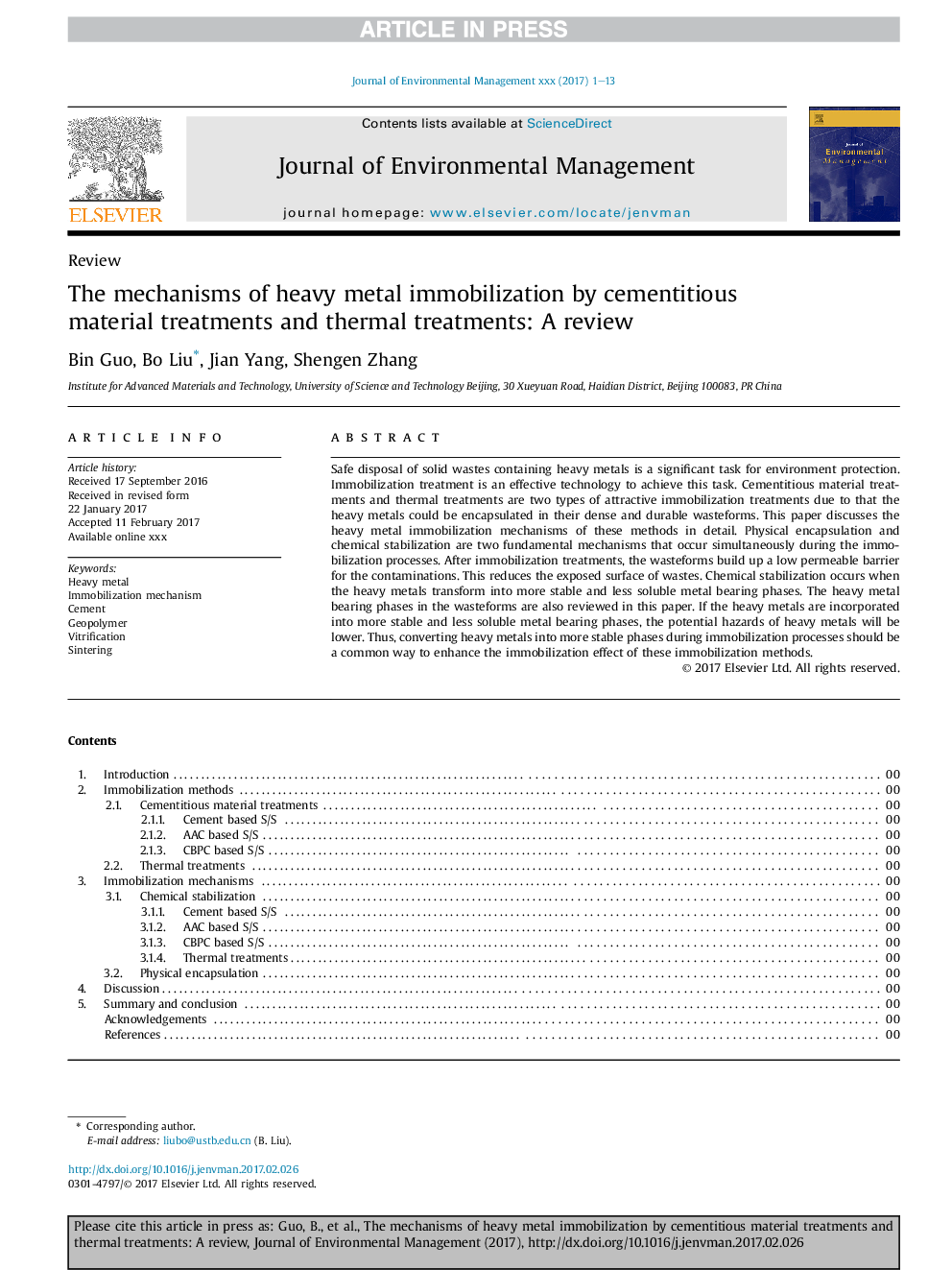| Article ID | Journal | Published Year | Pages | File Type |
|---|---|---|---|---|
| 5116844 | Journal of Environmental Management | 2017 | 13 Pages |
Abstract
Safe disposal of solid wastes containing heavy metals is a significant task for environment protection. Immobilization treatment is an effective technology to achieve this task. Cementitious material treatments and thermal treatments are two types of attractive immobilization treatments due to that the heavy metals could be encapsulated in their dense and durable wasteforms. This paper discusses the heavy metal immobilization mechanisms of these methods in detail. Physical encapsulation and chemical stabilization are two fundamental mechanisms that occur simultaneously during the immobilization processes. After immobilization treatments, the wasteforms build up a low permeable barrier for the contaminations. This reduces the exposed surface of wastes. Chemical stabilization occurs when the heavy metals transform into more stable and less soluble metal bearing phases. The heavy metal bearing phases in the wasteforms are also reviewed in this paper. If the heavy metals are incorporated into more stable and less soluble metal bearing phases, the potential hazards of heavy metals will be lower. Thus, converting heavy metals into more stable phases during immobilization processes should be a common way to enhance the immobilization effect of these immobilization methods.
Related Topics
Physical Sciences and Engineering
Energy
Renewable Energy, Sustainability and the Environment
Authors
Bin Guo, Bo Liu, Jian Yang, Shengen Zhang,
